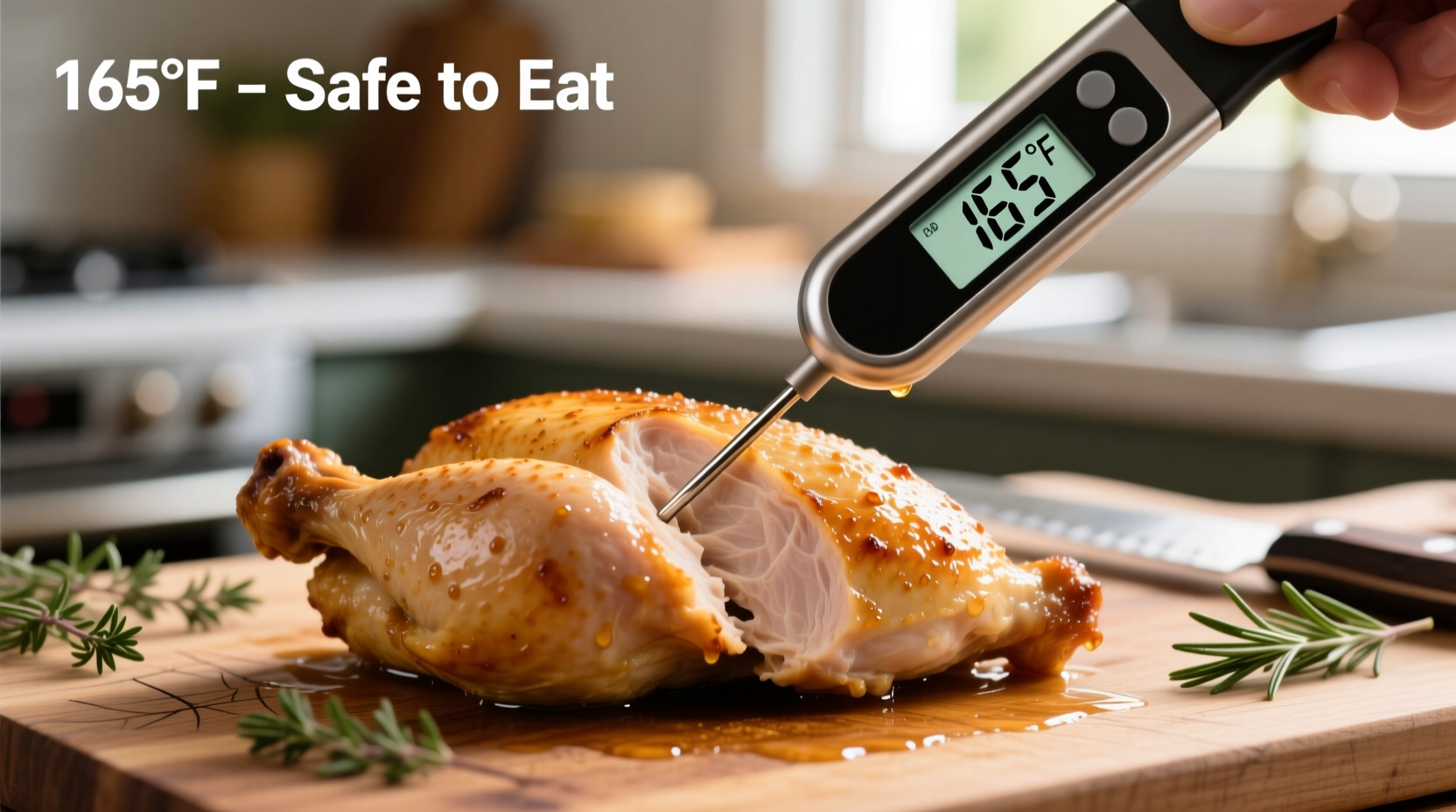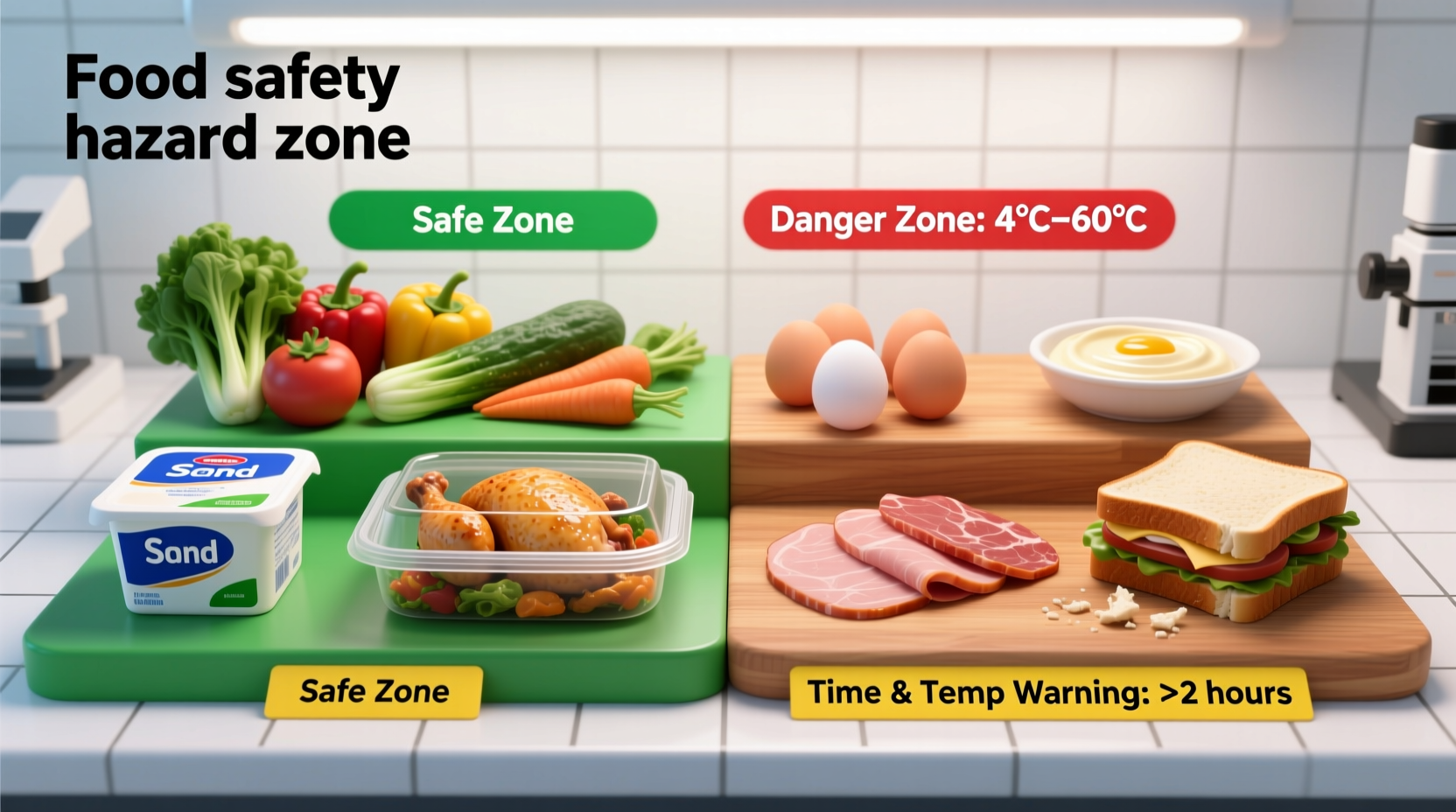The food danger zone is the temperature range between 40°F (4°C) and 140°F (60°C) where bacteria multiply rapidly, potentially causing foodborne illness. Keeping perishable foods out of this range is critical for food safety - refrigerate within 2 hours (1 hour if temperatures exceed 90°F). This guide provides science-backed strategies to prevent food poisoning in home and commercial kitchens.
Every year, 48 million Americans suffer from foodborne illnesses, with improper temperature control being a leading cause. Understanding the food danger zone isn't just kitchen protocol—it's your primary defense against preventable illness. Whether you're meal prepping, hosting a barbecue, or operating a food business, mastering temperature safety transforms how you handle food.
Why Temperature Control Matters: The Science Behind Bacterial Growth
Pathogenic bacteria like Salmonella, E. coli, and Listeria don't just appear—they multiply exponentially within specific temperature ranges. The USDA's Food Safety and Inspection Service confirms that bacterial populations can double every 20 minutes in the danger zone. This isn't theoretical risk; it's measurable biological reality with potentially severe consequences.
| Temperature Range | Bacterial Activity | Food Safety Status |
|---|---|---|
| < 40°F (< 4°C) | Slowed growth (most bacteria dormant) | Safe for storage |
| 40°F-140°F (4°C-60°C) | Rapid multiplication (doubles every 20 min) | Danger Zone - Avoid |
| > 140°F (> 60°C) | Growth inhibited (most bacteria die above 165°F) | Safe for holding |
How Quickly Danger Zone Exposure Becomes Hazardous
Time spent in the danger zone directly correlates with risk level. The FDA Food Code specifies precise timelines for safety:
- 0-2 hours: Food remains generally safe if properly handled
- 2-4 hours: Increased risk—consume immediately or discard
- 4+ hours: High risk—discard food regardless of appearance or smell
This progression isn't linear—it's exponential. Consider this bacterial growth timeline for a chicken dish left at room temperature:
- Start: 100 bacteria present (normal contamination level)
- 20 minutes: 200 bacteria
- 40 minutes: 400 bacteria
- 2 hours: Over 64,000 bacteria
- 4 hours: More than 4 million bacteria
At just 4 hours, that single chicken piece contains enough pathogens to cause serious illness. This scientific reality underscores why "it looks fine" is never a safe assessment method.

Critical Danger Zone Scenarios You Must Avoid
Most foodborne illness outbreaks stem from predictable temperature control failures. These high-risk situations require special attention:
Thawing Mistakes
Leaving food to thaw on the counter exposes it to the danger zone for extended periods. The USDA Food Safety and Inspection Service recommends three safe thawing methods:
- Refrigerator thawing (takes planning but maintains safe temperatures)
- Cold water thawing (change water every 30 minutes)
- Microwave thawing (cook immediately after)
Buffet and Party Pitfalls
At gatherings, food often sits unrefrigerated for hours. The FDA advises:
- Keep hot foods above 140°F using chafing dishes or warming trays
- Maintain cold foods below 40°F with ice baths
- Discard perishables left out over 2 hours (1 hour if ambient temperature exceeds 90°F)
"Danger Zone" Temperature Myths Debunked
Several common misconceptions put food safety at risk:
- Myth: "If it smells okay, it's safe to eat"
- Fact: Pathogenic bacteria often don't affect odor or appearance
- Myth: "Room temperature is fine for short periods"
- Fact: Bacterial growth begins immediately in the danger zone
- Myth: "Refrigeration kills bacteria"
- Fact: Refrigeration only slows growth; proper cooking destroys pathogens
Practical Temperature Control Strategies
Effective danger zone management requires specific tools and techniques:
Essential Equipment
Invest in these temperature control essentials:
- Instant-read digital thermometer (critical for verifying internal temperatures)
- Appliance thermometer for refrigerator/freezer monitoring
- Insulated containers for food transport
- Coolers with ice packs for outdoor events
Temperature Verification Protocol
Follow this step-by-step process for safe food handling:
- Check refrigerator temperature daily (should read 40°F or below)
- Verify cooking temperatures with a calibrated thermometer
- Use the two-hour rule for cooked food storage
- Divide large portions into shallow containers for rapid cooling
- Reheat leftovers to 165°F minimum
Special Considerations for High-Risk Foods
Certain foods require extra vigilance due to higher contamination risks:
- Poultry: Cook to 165°F internal temperature
- Ground meats: Minimum 160°F
- Seafood: 145°F or until flesh is opaque
- Leftovers: Reheat to 165°F
- Dairy products: Discard if left unrefrigerated over 2 hours
Remember that visual cues like color changes in meat are unreliable indicators of safety. Only a properly calibrated thermometer provides definitive safety verification.
Food Safety Resources and Verification
For the most current guidelines, consult these authoritative sources:
These government agencies provide regularly updated, science-based recommendations that reflect the latest food safety research. Their guidelines form the foundation of professional food handling protocols worldwide.
FAQ: Food Danger Zone Essentials
What is the exact temperature range of the food danger zone?
The food danger zone spans from 40°F (4°C) to 140°F (60°C). Within this range, bacteria multiply rapidly, doubling approximately every 20 minutes. The FDA Food Code specifies a slightly narrower range of 41°F-135°F for regulatory purposes, but the broader 40°F-140°F range remains the standard safety guideline for consumers.
How long can food safely remain in the danger zone?
Perishable foods should not remain in the danger zone for more than 2 hours. If ambient temperatures exceed 90°F (32°C), this window reduces to 1 hour. After these time limits, bacteria levels may reach dangerous concentrations even if the food appears and smells normal. The "two-hour rule" is a critical food safety standard established by the USDA and FDA.
Does freezing food eliminate bacteria in the danger zone?
No, freezing does not eliminate bacteria—it only pauses their growth. When frozen food thaws, bacteria become active again and can multiply rapidly if the food enters the danger zone temperature range. Proper thawing methods (refrigerator, cold water, or microwave) are essential to minimize time spent in the danger zone during the thawing process.
Can you reverse danger zone exposure by refrigerating food?
No, refrigeration only slows further bacterial growth—it doesn't reverse damage already done. If food has been in the danger zone for more than 2 hours (1 hour above 90°F), harmful bacteria may have multiplied to dangerous levels and produced heat-stable toxins that refrigeration cannot eliminate. The only safe option is to discard food that has exceeded the time limits in the danger zone.
Do all foods have the same danger zone risk?
No, certain foods pose higher risks due to their composition. High-risk foods include meat, poultry, seafood, dairy products, eggs, cooked vegetables, and cooked starches like rice and pasta. These "TCS foods" (Time/Temperature Control for Safety) require stricter temperature management because they provide ideal conditions for bacterial growth. Acidic foods like tomatoes or pickled items have lower risk profiles.











 浙公网安备
33010002000092号
浙公网安备
33010002000092号 浙B2-20120091-4
浙B2-20120091-4